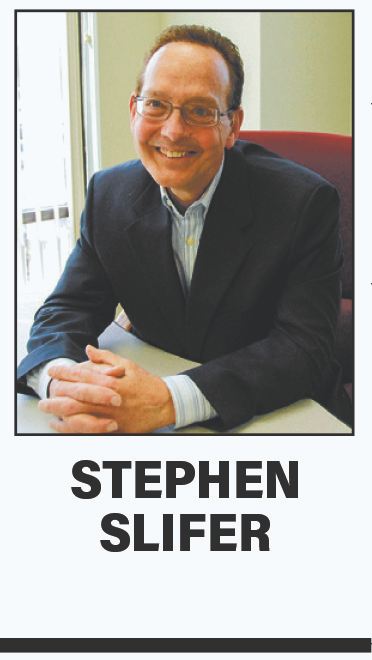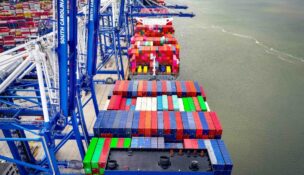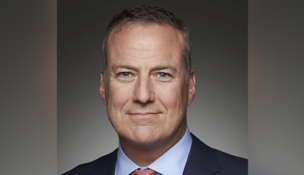When will the predicted recession arrive?
Guest Columnist //May 25, 2023//
The Conference Board’s index of leading indicators (LEI) has been falling steadily since December 2021. The index anticipates turning points in the business cycle by around 10 months. Based on this steep slide the Conference Board, the Federal Reserve, and many private sector economists anticipate a second half recession.
 But even though the index has been falling for 16 months the long-anticipated recession is not yet in sight.
But even though the index has been falling for 16 months the long-anticipated recession is not yet in sight.
Given that virtually every economic indicator has been distorted since the March/April 2020 recession, is it possible that economists are misreading the economic tea leaves? Could the LEI no longer be an accurate barometer of future economic activity? Or could it be giving us the right signal, but raising the red flag far too early?
 The index of leading indicator consists of 10 components that cover a wide range of economic activity — the stock market, consumer sentiment, the labor market, the housing sector and manufacturing. Each of its 10 components is itself a leading economic indicator.
The index of leading indicator consists of 10 components that cover a wide range of economic activity — the stock market, consumer sentiment, the labor market, the housing sector and manufacturing. Each of its 10 components is itself a leading economic indicator.
Theoretically, the performance of all 10 combined gives a better reading of future economic activity than any individual component. Historically it works fairly well but the lead times are variable and it occasionally sends a false signal. But the index has never fallen this far for this long and been wrong.
Several components of the index may be overemphasizing the extent of economic softness that might be forthcoming.
Consumer sentiment today is not only lower than it was at the bottom of the 2020 recession when everyone was worried about COVID and the impact of the government-imposed shutdown, it is comparable to the lowest level reached in the so-called “Great Recession” of 2008-2009. But today’s economy is not nearly as weak either of those earlier periods. The worst that anybody anticipates is a “mild” recession.
Given the drop in consumer sentiment, one would expect consumers to curtail spending. But consumer spending has held up well. This is puzzling. Part of the reason could be that the 3.4% unemployment rate is the lowest in 50 years. If workers lose their job, they can easily find another. Because there is no concern that their income stream will be interrupted they have perhaps chosen to keep spending.
In addition, during the recession consumers took advantage of the stimulus checks and paid down a considerable amount of debt. As a result, their monthly debt payments as a percent of income plunged to the lowest level since the 1980s. Consumers have recently begun to boost their credit card borrowing which has boosted this ratio. But it started at a record low level and still remains far below its historical average. When consumer debt becomes a problem, delinquency rates will rise. Thus far delinquency rates remain at their lowest level in years.
When the economy is growing and employers need to boost output they can either hire more workers or work existing employees longer hours. When the pace of economic activity softens they will do the opposite. Initially they will choose to shorten worker hours because they do not know whether the emerging weakness will be temporary or the beginning of a longer-lasting slump. If firms shorten hours they can easily reverse that action if orders rebound. If the economic slump is prolonged the next step would be layoffs. Once that happens the economy has fallen into recession. Thus, changes in the length of the workweek are a leading indicator of changes in the pace of economic activity.
Firms have been shortening hours steadily since the Fed began to raise rates in early 2022 and the nonfarm workweek appears to be signaling that an economic downturn is coming. But after the 2020 recession, the workweek surged as demand skyrocketed once the economy reopened.
The workweek was abnormally long. While it has declined for the past two years, it is at the same level that existed prior to the recession. So, is the workweek an indicator that a sustainable pace of economic activity lies ahead? Or is this a sign that a recession is coming?
The dramatic and prolonged decline in the index of leading indicators has convinced almost everybody that a recession will occur in the not-too-far-distant future. But consumers and business leaders are not behaving exactly like they did in the past. As a result, the LEI may be overstating both the magnitude and the timing of any upcoming economic downtown.
How will we know when the recession has arrived? Easy. The Conference Board has a companion index known as the Index of Coincident Indicators. The Index of Leading Indicators tells us that a recession is coming at some point down the road. The Index of Coincident Indicators tells us when it has arrived. This index continues to climb, which means that the economy is still growing.
What indicators are included in the Index of Coincident Indicators? Payroll employment and industrial production are two of its three components. When they begin to turn downwards the recession will have arrived. Right now payroll employment continues to climb. In the past three months it has risen on average 211 thousand per month and it is unlikely to dip into negative territory any time soon. Industrial production has been steady for the past year. When the recession begins this index should plunge.
The index of leading indicators appears to be signaling that a recession is coming. But given that economic behavior has changed so much in the past three years, we are skeptical of both the timing and the magnitude of the economic slump. So unlike the Fed and many private sector economists we do not expect a recession to begin in the second half of this year. It will eventually arrive, but to get there we think the Fed will need to boost the funds rate to 6.0% or so.
From 1980 until 2003, when he retired, Stephen Slifer served as chief U.S. economist for Lehman Brothers in New York City, directing the firm’s U.S. economics group along with being responsible for forecasts and analysis of the U.S. economy. He has written two books on using economic indicators to forecast financial moves and previously served as a senior economist at the Board of Governors of the Federal Reserve in Washington, D.C. Slifer can be reached at www.numbernomics.com.


















